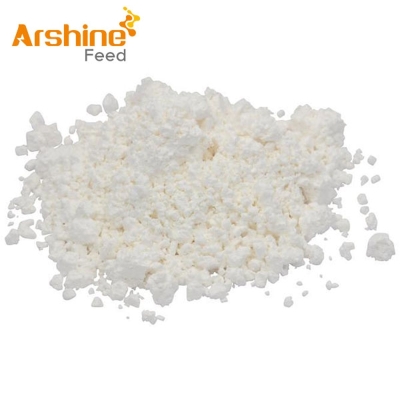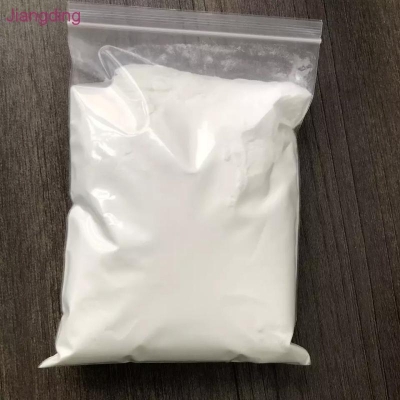-
Categories
-
Pharmaceutical Intermediates
-
Active Pharmaceutical Ingredients
-
Food Additives
- Industrial Coatings
- Agrochemicals
- Dyes and Pigments
- Surfactant
- Flavors and Fragrances
- Chemical Reagents
- Catalyst and Auxiliary
- Natural Products
- Inorganic Chemistry
-
Organic Chemistry
-
Biochemical Engineering
- Analytical Chemistry
- Cosmetic Ingredient
-
Pharmaceutical Intermediates
Promotion
ECHEMI Mall
Wholesale
Weekly Price
Exhibition
News
-
Trade Service
CT findings of closed-loop ileus
Closed-loop ileus is a special form of intestinal obstruction that manifests as a blockage at one point at both ends of the loop, forming a closed loop
.
Usually due
to adhesions, mesangial torsion, and internal herniation.
In the large intestine is called volvulus
.
Loop-closure ileus
that occurs in the small intestine is called small bowel closure.
Closed-loop ileus in the small intestine causes strangulation and a very high chance of bowel necrosis, with a mortality rate of 10% to 35%.
Take a look at the standard pattern diagram
The main CT signs of closed-loop ileus:
(1) signs of intestinal obstruction;
(2) U- or C-shaped loops;
(3) Concentration of mesenteric vessels towards the obstruction point;
(4) The obstruction point has a vortex sign, a bird's beak sign or two adjacent atrophic intestinal loops are round, oval or triangular;
(5) The closed loop intestinal tube is completely or almost completely filled with liquid and its proximal dilated intestinal curve often contains a large amount of gas;
(6) Memesenteric swelling, hyperemia, edema
.
When small bowel closure loop ileus is suspected in the emergency department, the most important thing in addition to the general diagnosis is to determine the presence or absence
of strangulation.
That is, the presence or absence of blood transport disorders
.
The incidence and mortality of closed-loop ileus are mainly due to intestinal necrosis and subsequent secondary changes
.
This is also the most common secondary change
due to closed-loop ileus.
CT is a very good imaging tool
for evaluating the presence or absence of closed-loop small bowel obstruction.
Fig.
2: U and C-shaped intestinal loops, the obstruction shown by the arrow is beak-like
.
CT shows small bowel closure loop ileus based on two aspects: the length of the closed loop bowel formed; The direction in which the loop rotates in
the image plane.
If it is a short closed loop, a U or C-shaped bowel
is usually seen.
Fig.
3: Closed-loop intestinal obstruction dilates the radial arrangement of the intestine, thickens the intestinal wall, and mesangial edema, suggesting ischemic changes
Another important sign of closed-loop ileus is the radial arrangement of the dilated bowel with mesenteric vessels gathering in the center
.
This imaging finding is almost always due to
small bowel obstruction.
The ischemic manifestations caused by closed-loop intestinal obstruction are not significantly different from
other causes of mesenteric ischemia are: 1.
Thickening of the intestinal wall; 2.
Mesangial edema; 3.
Ascites 4.
Ischemic bowel enhancement can manifest in three ways
: normal, strengthened, and lacks strengthening.
Closed-loop small bowel obstruction due to adhesion band compression
Fig.
4: Closed-loop ileus ischemic
loop intestinal obstruction After enhancing closed-loop intestinal obstruction, the mesangial vessels are clear, but the intestinal wall lacks blood supply
.
Another sign of ischemia is mesangioedema thickening of the bowel wall, and ischemic necrosis
of the intestinal tube is found during surgery.
Fig.
5: Closed-loop intestinal obstruction, manifested as clustered arranged dilated loops If the closed loops are long, the intestinal tube travels
perpendicular to the display plane, which is manifested as a clustered aggregated intestinal tube
.
Sometimes this is difficult to visualize in axial images, and coronal reconstruction is helpful
.
This case is accompanied by mesangial edema, localized ascites, thickening of the bowel wall, suggesting strangulation, and possible
necrosis of the bowel wall.
Small intestinal volvulus, mesentery and blood vessels are "swirling"
.
Imaging examination techniques for closed-loop ileus: First, CT usually does not need oral contrast medium when examining patients with suspected intestinal obstruction for the following reasons:
1.
Oral contrast medium for intestinal dilation aggravates the patient's discomfort and is easy to cause vomiting
.
2.
The contents of the intestinal tube can be used as a neutral contrast medium
.
3.
The positive contrast medium will interfere with the observation
of intestinal wall strengthening.
Intravenous contrast can be used to visualize abnormal reinforcement
of the bowel wall.
Second, the scanning range includes the entire abdomen as much as possible, train the patient to hold their breath, and obtain high-quality images
as much as possible.
Third, multi-directional reconstruction to obtain multi-plane intuitive images
.
Fig.
6: Some patients with atypical closed-loop ileus are not easy to find
the oral positive contrast medium in the imaging manifestations of the patient, the compressive changes of the intestinal tube shown in Fig.
B (arrow), the dilated small intestine shown at the distal end of Fig.
C, and no contrast medium filling, suggesting loop
closure.
Only a little contrast medium enters the closed loop
through the obstructive segment.
Returning to panel B, two strictures (arrows) can be seen, so two adjacent atrophic bowel tubes can be shown, representing two obstructive ends
of loop obstruction.
Thickening of the bowel wall, ascites, and mesangial edema suggest bowel ischemia
.
Note: Enteral contrast media can interfere with the evaluation
of bowel enhancement.
Fig.
7: Closed-loop ileus and "small intestinal fecal sign" with no dilation
adjacent to the small intestine.
The small intestine adjacent to the obstruction point may not be significantly dilated, the imaging shows no suspicious intestinal obstruction, and the patient takes a positive contrast medium to look for new findings
.
The first thing to note is that the small intestine is not dilated, and on scan to the pelvis, a dilated bowel with uneven contents is found, and further C-shaped dilated intestinal tube suggests closed-loop ileus
.
Another important sign is the "small bowel stool sign" (SBFS: arrow), which is very useful in the transition from normal to obstructive and easily identifies the obstruction point and cause
of the obstruction.
Small bowel stool signs are formed by gas, solid components in the dilated small bowel loop, similar to large intestinal stool
.
Figure 8: Abdominal pain and bloating in a 57-year-old man with large intestinal obstruction
for two days, progressively worsening, as shown on
plain radiograph.
In addition to diffuse dilated bowel, larger air-containing structures in the pelvis are mainly found, and the diagnosis considered is volvulus, and more likely sigmoidal volvulus (because the dilated intestinal tube is located in the pelvis).
However, in this case it is cecal volvulus
.
See figure below
Figure 9: Caecal volvulus can occur anywhere
.
Volvulus usually leaves its normal position, so sigmoidal volvulus can only move to the upper quadrant, usually the right upper quadrant.
Caecal volvulus can occur anywhere, even in the pelvis
.
Fig.
10: The patient's CT showed
descending colon collapse, ascending colon did not dilate, so it would not be sigmoid volvulus, and the bird's beak-like structure was located in the lower right quadrant, that is, the site of
intestinal torsion.
The lower left quadrant shows dilated cecum.
Figure 11: Coronal reconstruction is very valuable
.
Showing no dilation of the ascending colon, descending colon (straight arrow) and torsion site (curved arrow).
Figure 12: Caecal volvulus is a small bowel obstruction
caused by the cecum surrounding ascending colonic volvulus.
The slender and long mesangium is a predisposing factor
for volvulus.
Incomplete midgut rotation is another precipitating cause
.
Infarction is usually the result of venous congestion and rarely obstruction
of the arterial blood supply.
The incidence of cecal volvulus accounts for 25%
of colonic volvulus.
Figure 13: Dilated cecal volvulus (C) leaves the normal position
.
Classic cecal volvulus
.
Beak-like transition zone
in the lower right abdomen.
The dilated cecum is located in the left upper quadrant.
It also shows a collapsed descending colon (curved arrow)
located behind the dilated cecum.
Fig.
14: The sigmoid colon retorts
the sigmoid colon dilation from the pelvis to the right upper quadrant
.
Think about the question: why not cecal volvulus
.
Important signs: proximal colonic distension, left dilated loop of the bowel is transverse colon
.
Fig.
15: CT scan of the same patient shows torsion of the sigmoid colonic intestinal extension into the diaphragm
.
Sigmoidal volvulus is the most common volvulus, accounting for 75%
of colonic volvulus.







